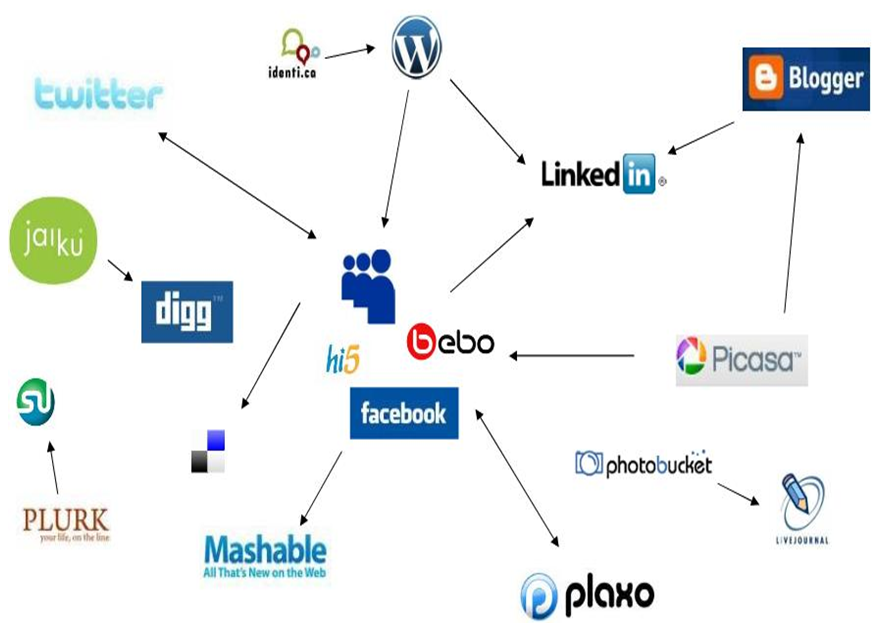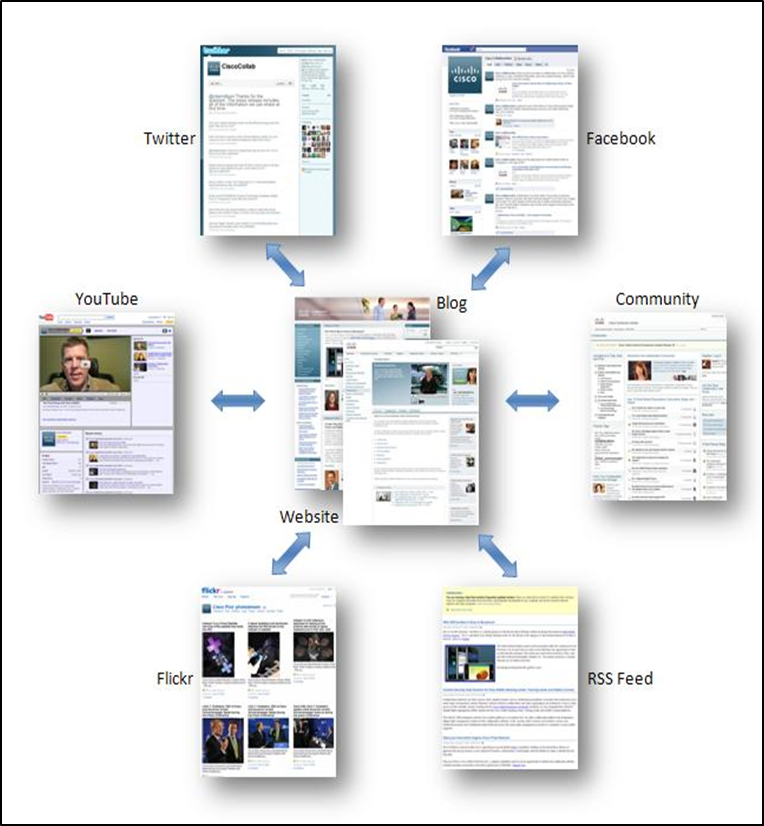This week marks the fielding of MarketingSherpa’s third annual Social Marketing Benchmark Survey. Looking back, I am fascinated at how far our practices have advanced in this channel in the past three years.
One of the most significant advances has been the materialization of the social marketing architecture. This systematic redesign of how social media sites individually contribute to overall marketing performance, has also brought attention to the significant need to incorporate landing page optimization as an important element of a social marketing strategy.
Random acts of social marketing
If we step back in time three years, we see early adopters of social marketing setting up blogs, social networks, multimedia sharing and other social media sites without a plan or a purpose. The result was a conglomeration of disparate, disconnected social sites that, at best, produced random acts of social marketing and looked something like this:
click to enlarge
In last year’s survey, we found that one quarter of organizations had reached the Strategic Phase of social marketing maturity. Organizations in this phase are distinguished as having a formal social marketing process with thorough guidelines they routinely perform. In other words, they have a plan and a purpose behind everything thing they do in this channel. And one of the things they have a plan and a purpose for is their social marketing architecture.
Why build an architecture with a hub and spoke framework?
As part of our research, we dissected a number of very successful social marketing programs and found that many of them have one thing in common – an architecture of social sites built around a framework that resembles a hub and spoke system. A social marketing architecture using a hub and spoke framework looks something like this:
click to enlarge
At the center of the framework is the hub which, in most cases, consists of a website and a blog. Websites have become the hub of most marketing strategies and the primary point of conversion. And if websites have become the hub of the overall marketing strategy, blogs have become the hub of the social marketing strategy. In many cases, these two platforms are designed to work as one.
Surrounding the hub are spoke sites for building communities, engaging members, storing multimedia content, etc. As the arrows indicate, spoke sites direct the flow of traffic into the hub – the primary conversion point. The number of spoke sites is not important. What is important is that each spoke site utilized has a specific plan and manageable purpose in the architecture.
Having several spoke sites working together, with the same purpose, can drive a significant increase in traffic to the hub’s landing page conversion points. This significant increase in traffic to your primary conversion points will make a valid business case for increasing your focus on landing page optimization in 2011.
Please share your insights on social media marketing by taking our third annual Social Marketing Benchmark Survey. This survey is being fielded now and will only remain open through Sunday, February 6, 2011.
Related Resources
Developing a Social Media Strategy: 6 Lessons from Kodak
Facebook Marketing in Six Steps: How to successfully manage your fan page
Social Media Marketing: How enterprise-level social media managers handle negative sentiment
Improve Your Facebook Profile to Increase Consumer Interaction: 4 Tactics — MarketingSherpa Members’ Library






When engaging in multiple social media platforms it’s important to convey a similar tone and message. It’s important that the landing page of a website directly relates to the content and call to action that sent a user there in the first place. If the message is different, the user will be frustrated and confused and will most likely leave the page.
I like the fact that you include Flicker as one of you spokes. Photo sharing sites, like alt tags, are way to often overlooked as sources of traffic. Also, I know it is over simplified, but don’t forget to shoot links at your spoke pages. Make them there own hubs.